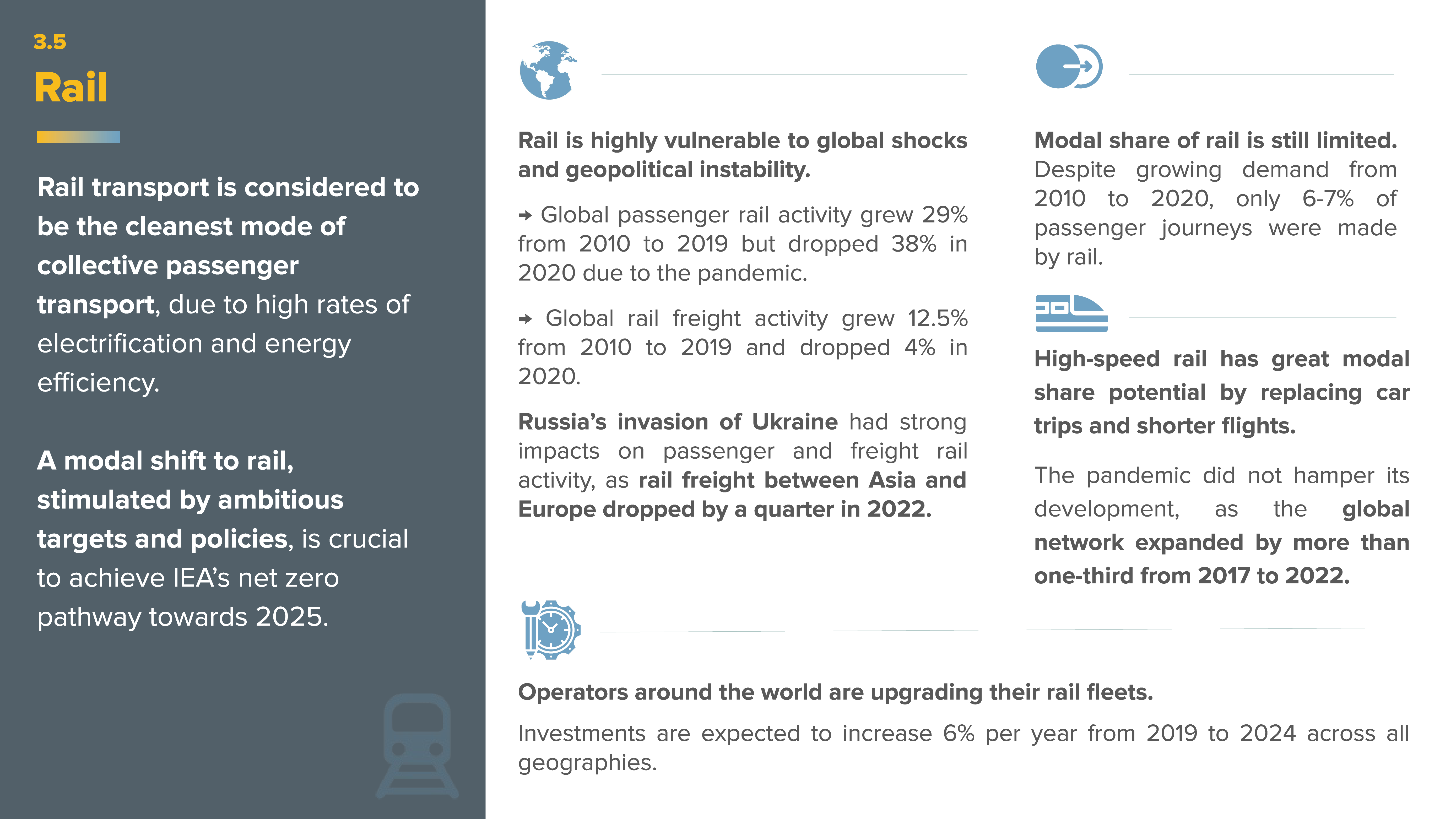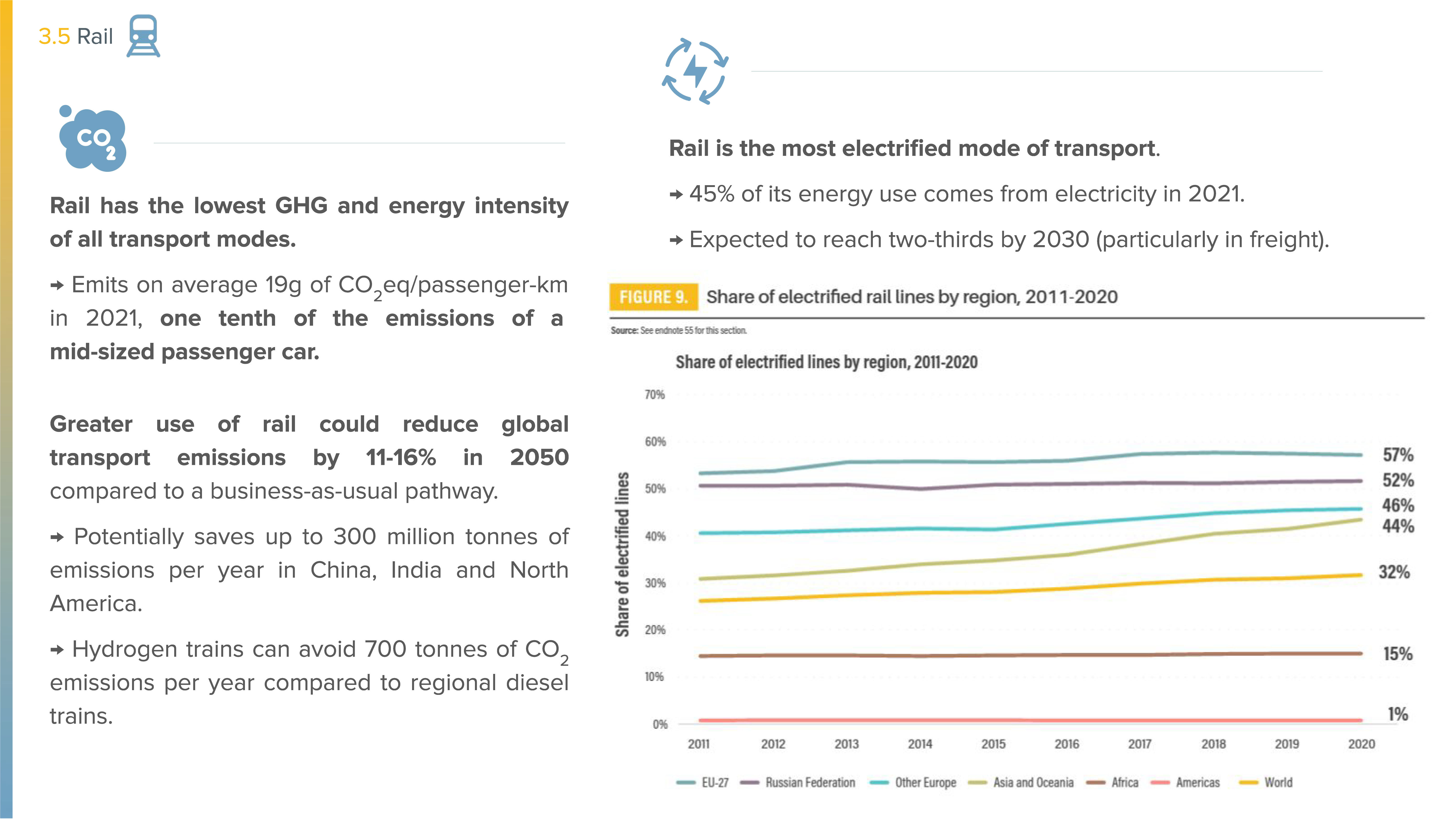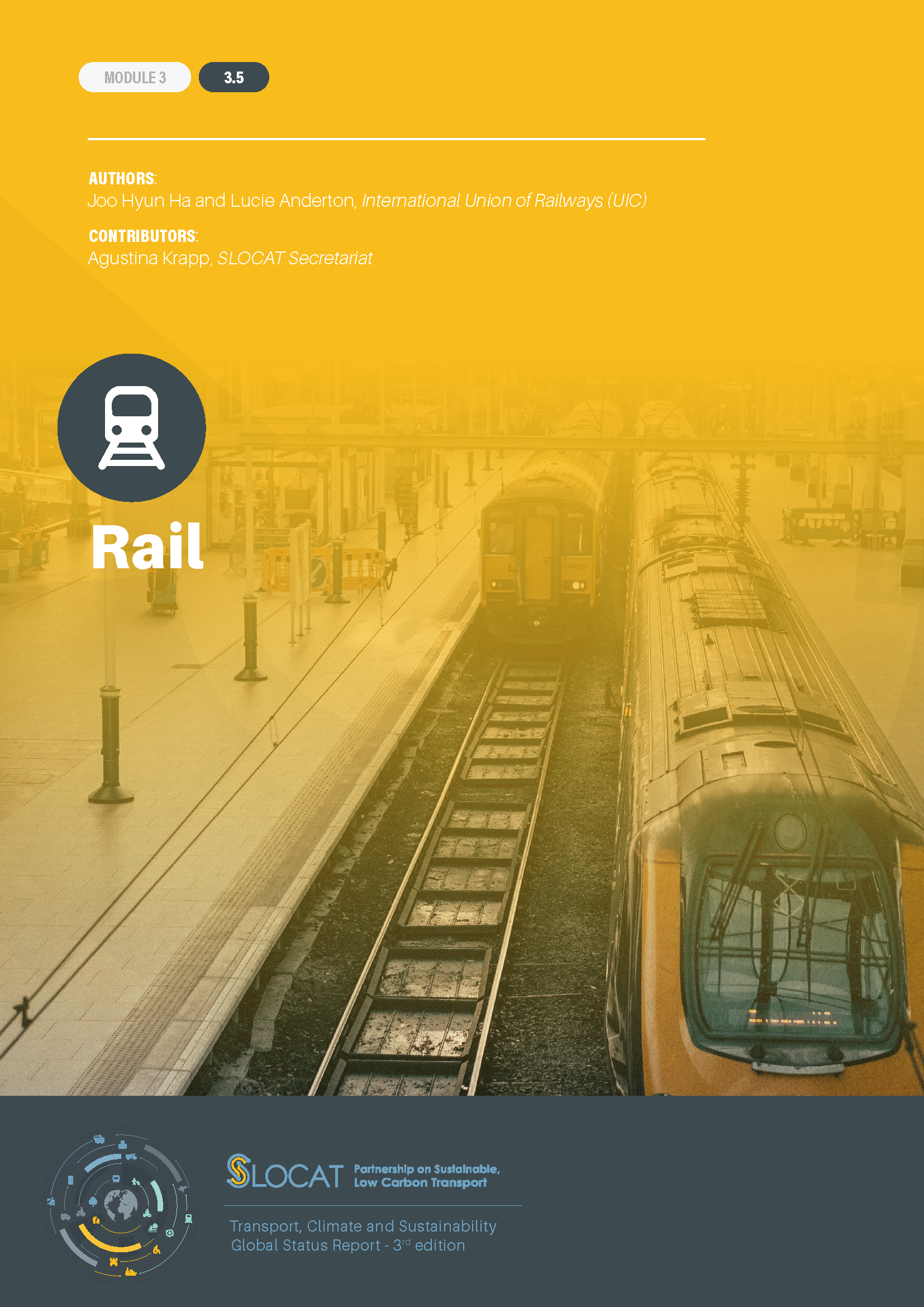-
Rail
- Key Findings
- A modal shift to rail, stimulated by policy initiatives based on ambitious targets, can play a decisive role in cutting carbon emissions from the transport sector, according to the International Energy Agency’s scenario for net zero emissions by 2050.
- Despite growth in passenger and freight rail activity during 2010-2020, only 6-7% of passenger journeys were made by rail, on average. Freight logistics flows will need to exploit rail’s potential to achieve higher volumes and efficiency.
Demand trends
- Global passenger rail activity grew 29% between 2010 and 2019, from 3.22 trillion to 4.16 trillion passenger-kilometres.
- Due to mobility restrictions related to the COVID-19 pandemic, global passenger demand for rail services fell 37.7% in 2020 to 2.59 trillion passenger-kilometres.
- Rail use trends in the first half of 2022 varied widely by region and rail mode (passenger versus freight transport).
- Global rail freight activity increased 12.5% between 2010 and 2019, to 11.3 trillion tonne-kilometres, then fell 4% in 2020 to 10.9 trillion tonne-kilometres. By region, Asia and Oceania accounted for 41% of all rail freight activity in 2020, followed by the Americas (28%).
- The Russian Federation’s invasion of Ukraine had strong impacts on passenger and freight rail activity, as rail freight between Asia and Europe dropped by a quarter in 2022.
- Between 2010 and 2020, rail lines globally were extended by nearly 50,000 kilometres to reach 1.1 million kilometres, although very little growth occurred outside of Asia.
- High-speed rail activity dropped sharply in 2020, falling 50% on average across countries. However, the pandemic did not stop the development of infrastructure, as the global high-speed rail network expanded by more than one-third from 44,000 kilometres in 2017 to nearly 59,000 kilometres in 2022.
- High-speed rail can increase the modal share of rail by replacing car trips and shorter flights.
- Operators around the world are upgrading their rail fleets, with investments in rail rolling stock projected to increase 6% a year between 2019 and 2024 across all geographies.
Emission trends
-
Rail has the lowest greenhouse gas and energy intensity of all transport modes, emitting on average 19 grams of carbon dioxide (CO2) equivalent per passenger-kilometre in 2021, one-tenth the emissions of a medium-sized passenger car.
- Greater use of rail could reduce global transport emissions 11-16% in 2050 compared to a business-as-usual pathway, saving up to 300 million tonnes of emissions annually in China, India and North America.
- Rail is the most electrified mode of transport, with around 45% of its energy use coming from electricity in 2021. This share is projected to reach two-thirds by 2030 (particularly in freight), and growth in hydrogen use is also anticipated. In 2021, freight rail consumed four times more energy than passenger rail.
- Because trains are large energy consumers, decarbonising the electricity grid through the use of renewable energy is an important step to delivering net zero railways.
- When trains are powered by renewable hydrogen, they provide an almost silent ride and emit only steam and condensed water, avoiding up to 700 tonnes of CO2 emissions annually compared to the equivalent regional diesel train.
Policy developments
- As part of national plans for pandemic recovery, between 2020 and 2022 governments launched plans to upgrade and develop rail lines and to decarbonise transport, although public spending for road transport remains higher than for rail.
- Shifting transport activity to rail is key to decarbonising the global transport sector. To meet global climate targets for 2050, an estimated 15% of flights and more than 2% of private vehicle road travel need to be moved to high-speed rail.
- Railway expansions (conventional and high-speed rail) are planned in all regions to improve the connectivity and convenience of rail travel. The global high-speed rail network is projected to grow from around 59,000 kilometres in 2022 to 78,000 kilometres in the next years.
- As of 2022, 9 out of the 30 countries that submitted updated Nationally Determined Contributions towards reducing emissions under the Paris Agreement mentioned solutions in the rail sector, mostly as a mitigation action.
Authors: Joo Hyun Ha and Lucie Anderton, International Union of Railways (UIC)
Contributor: Agustina Krapp, SLOCAT Secretariat



